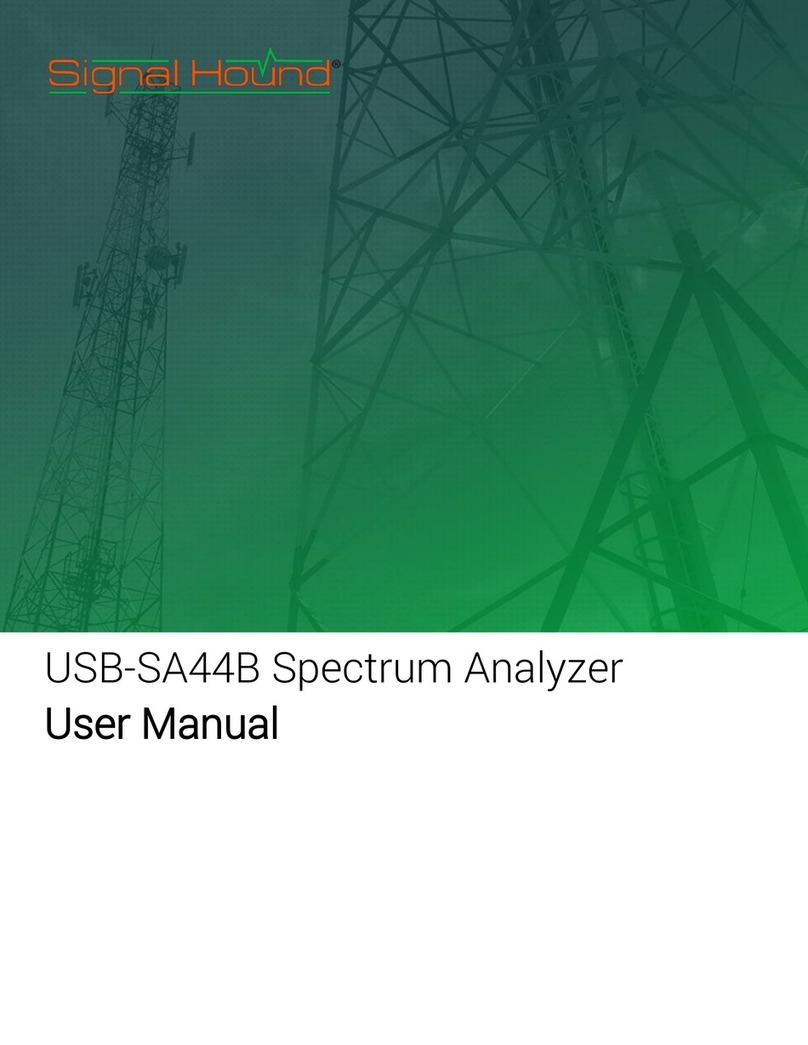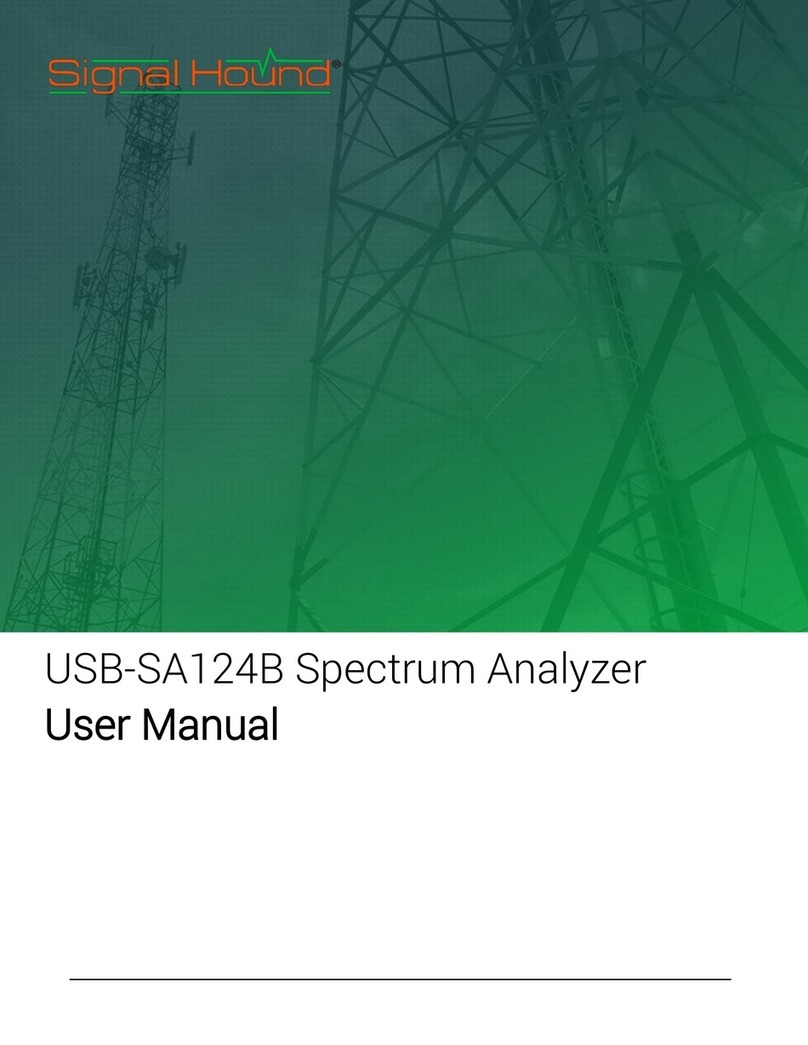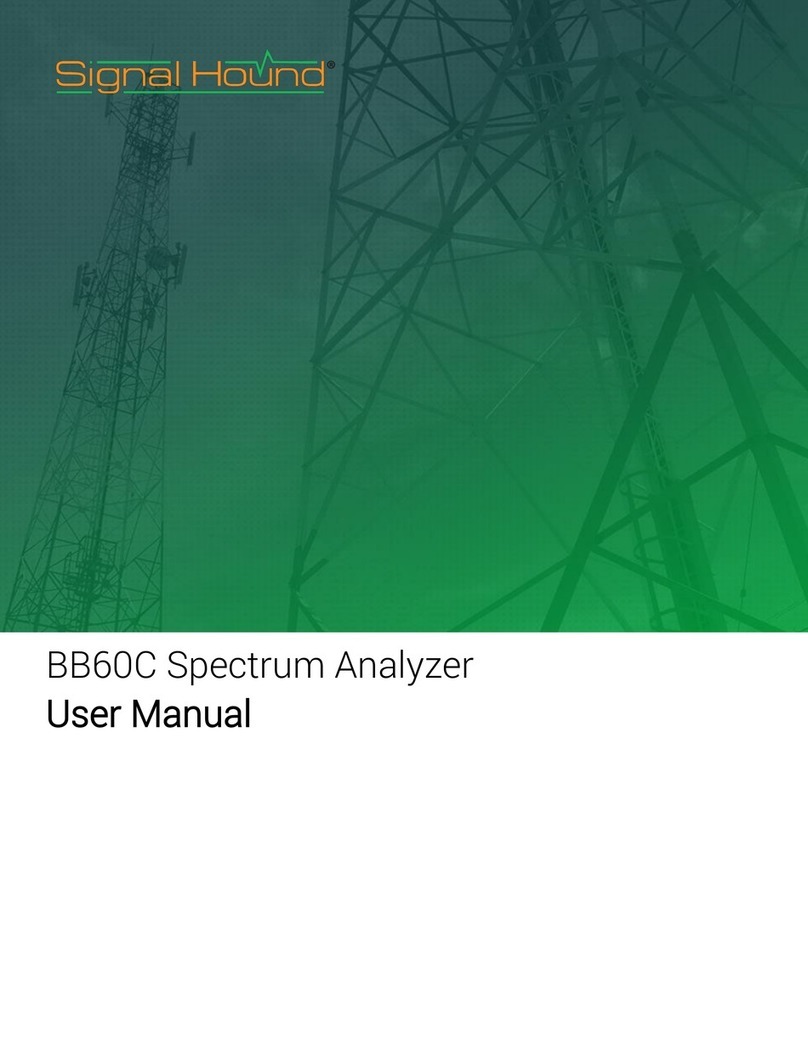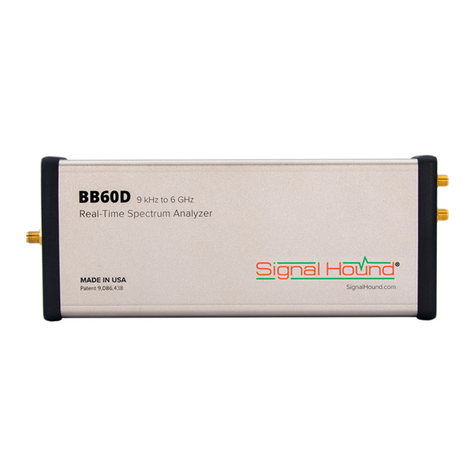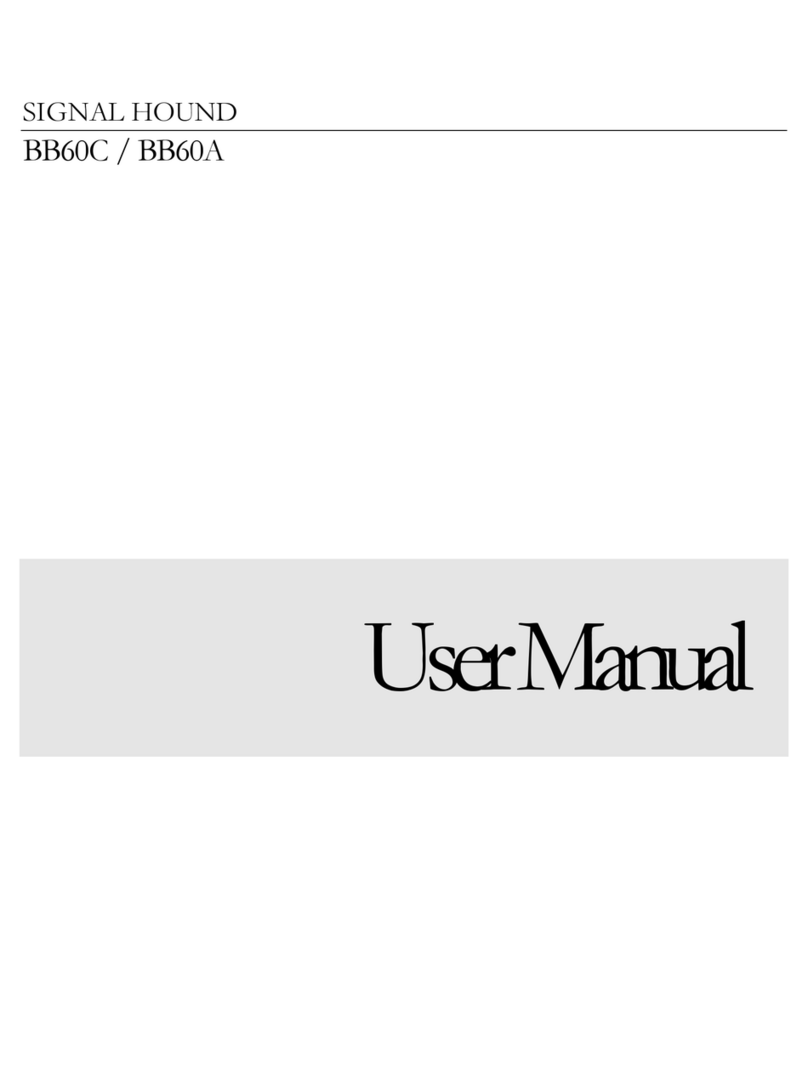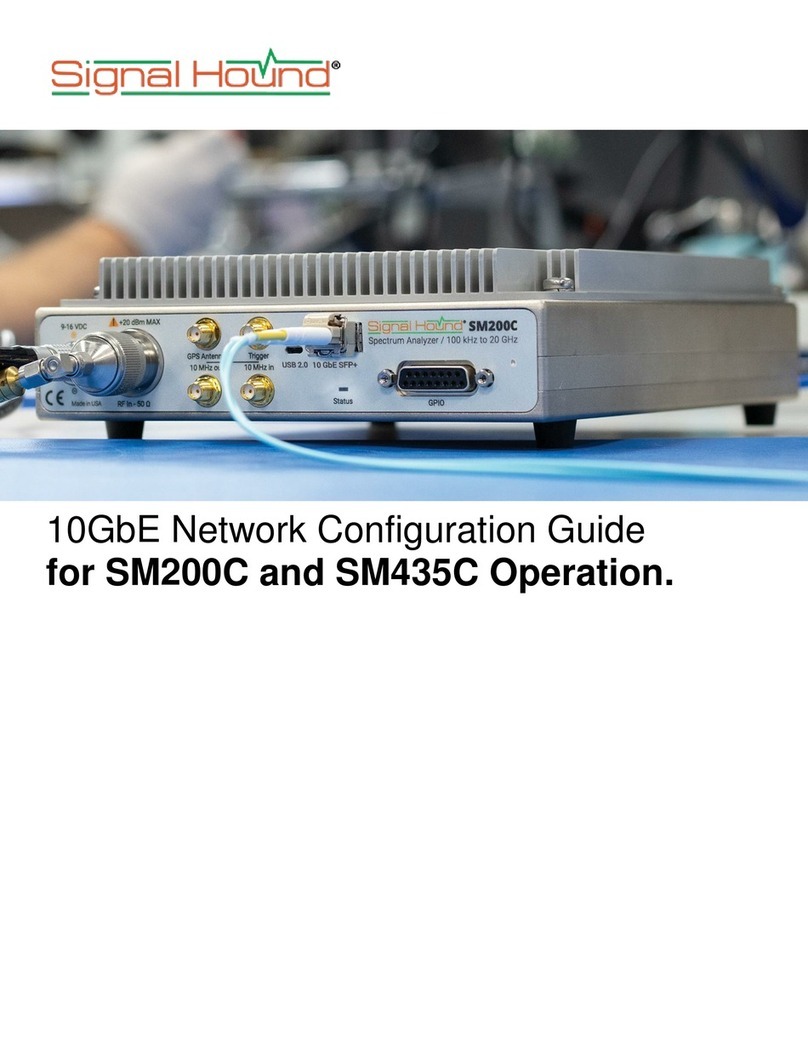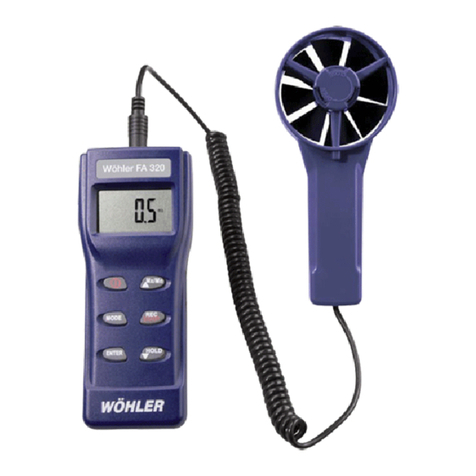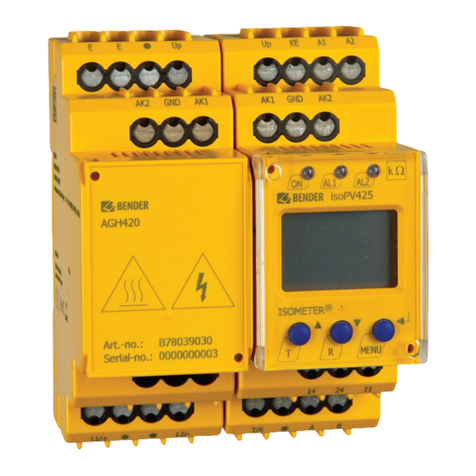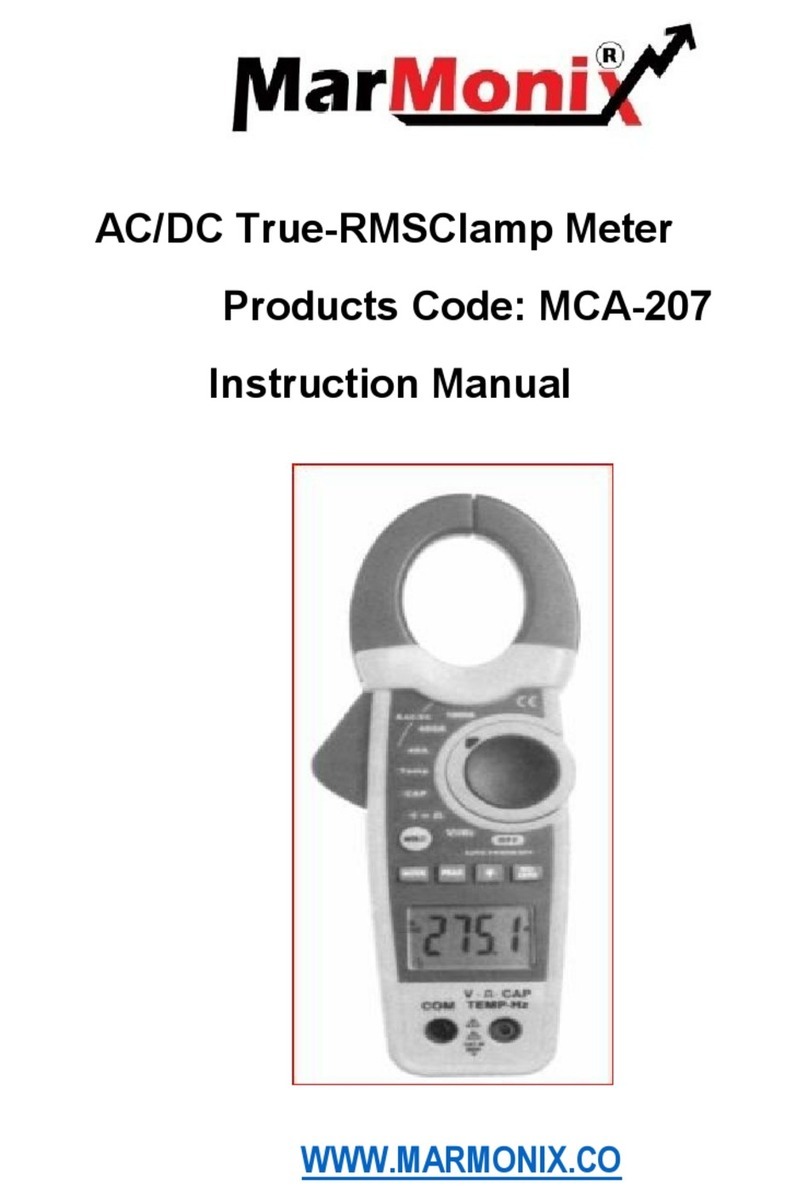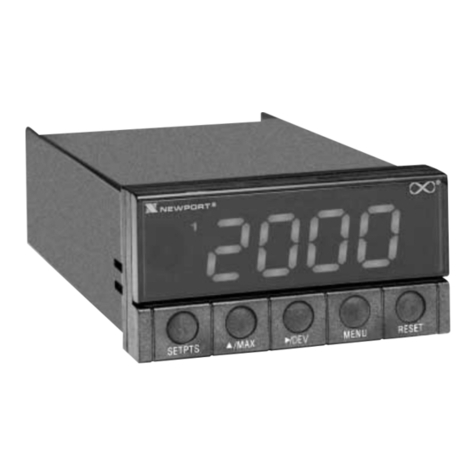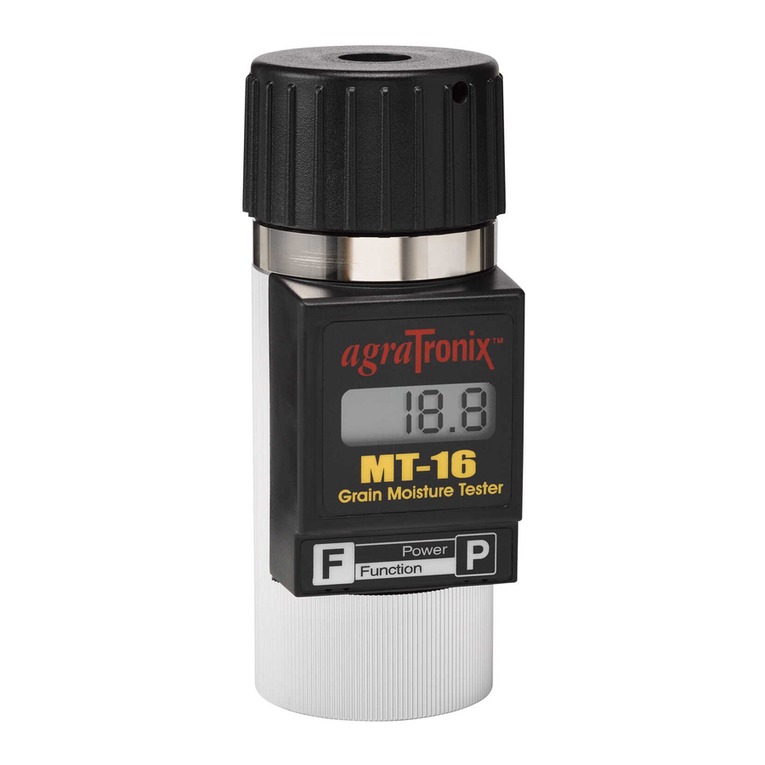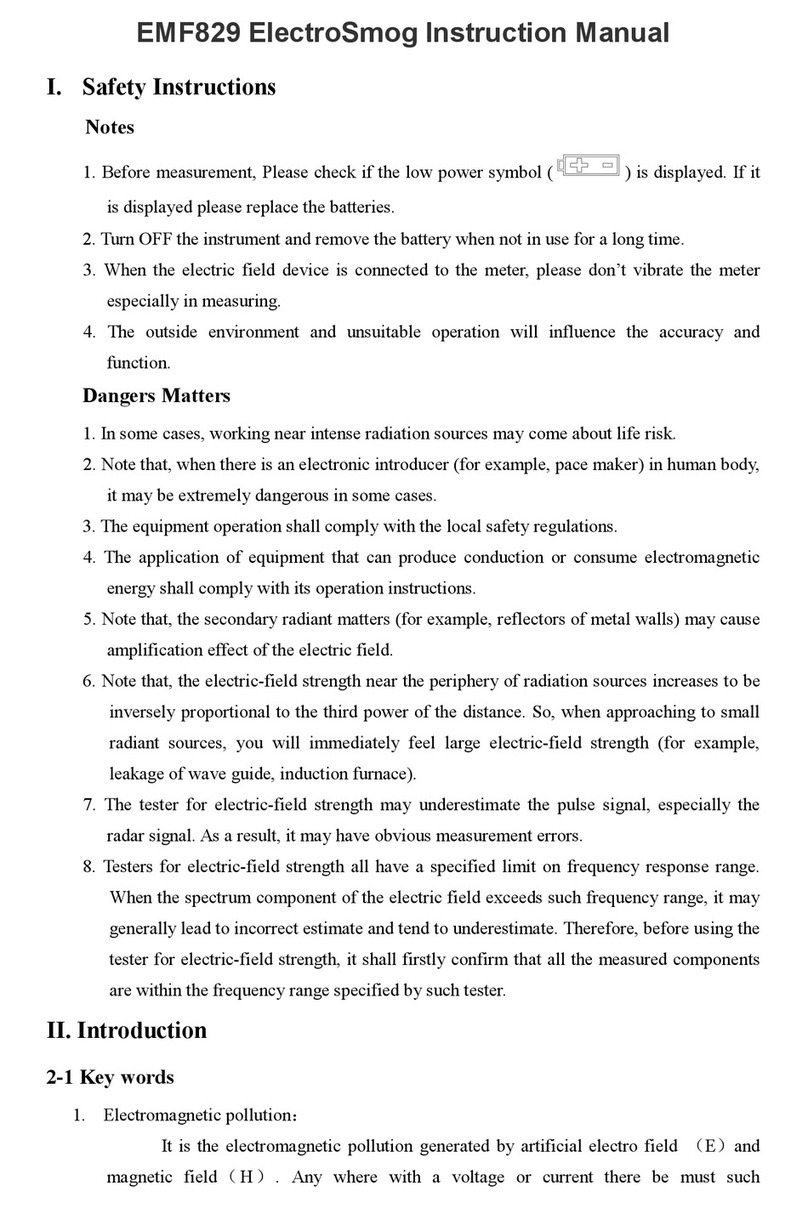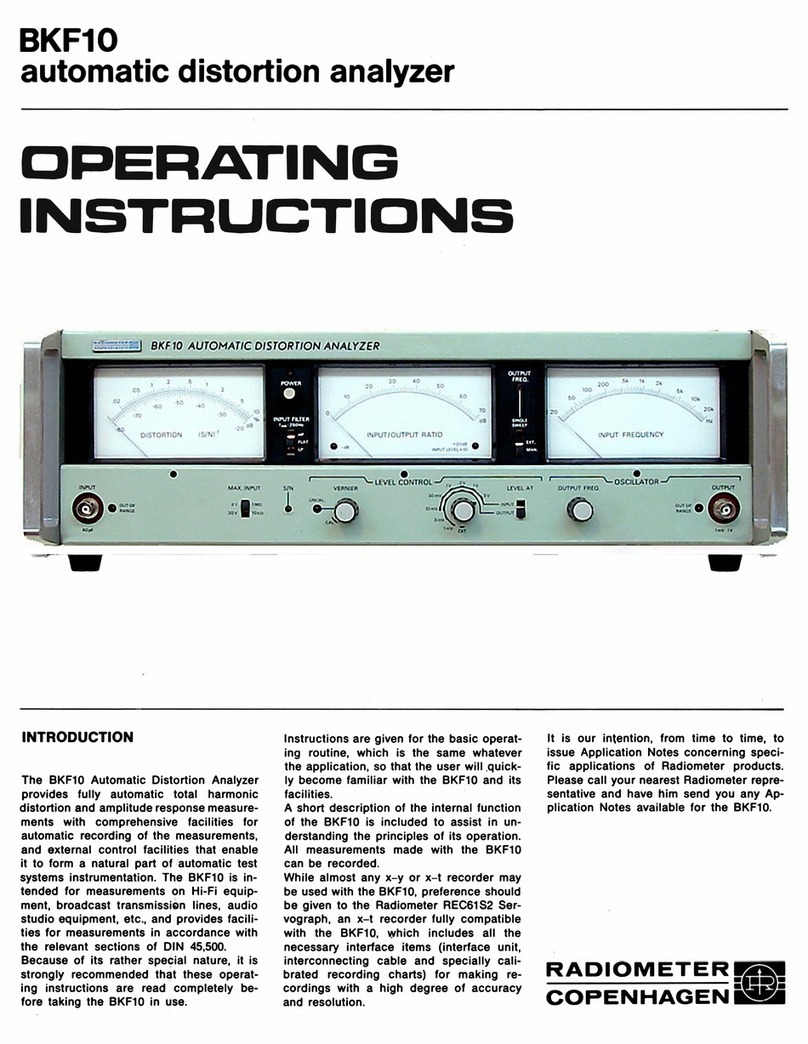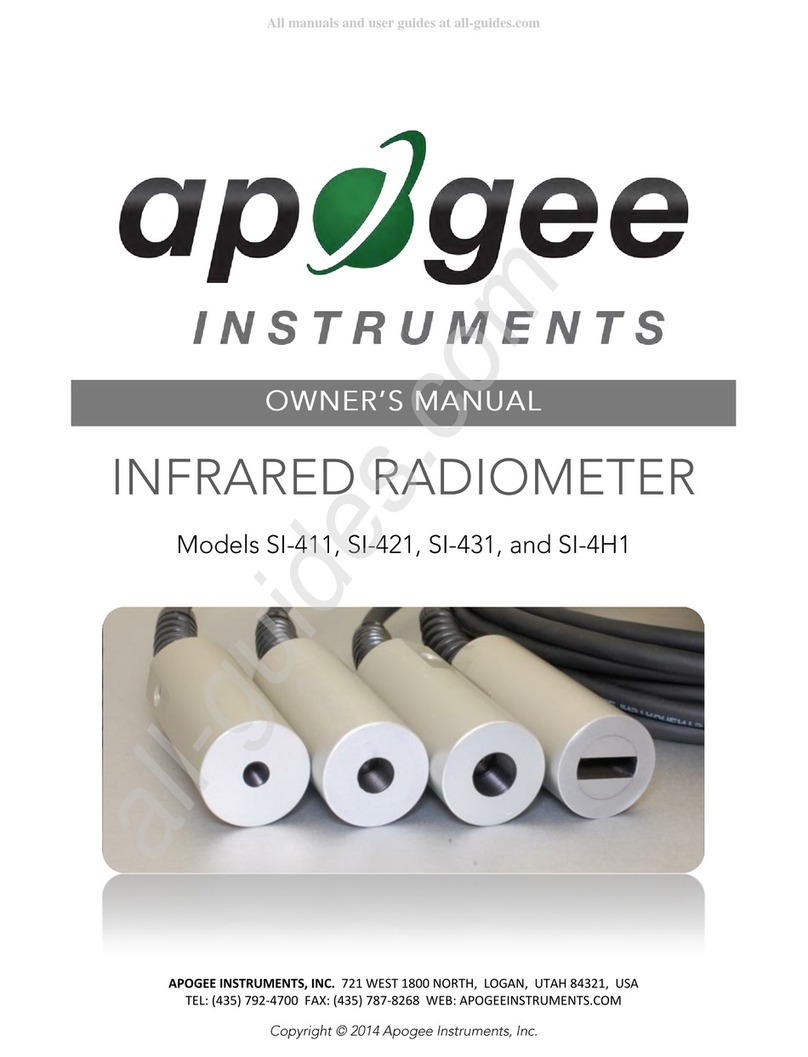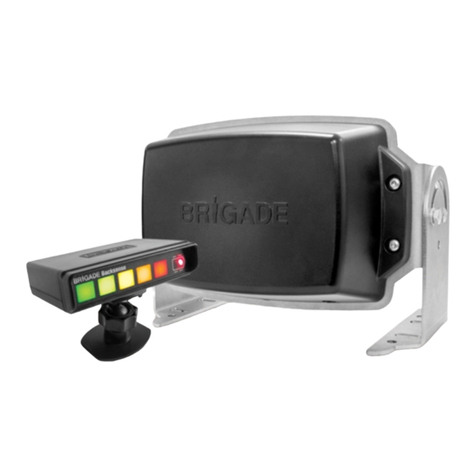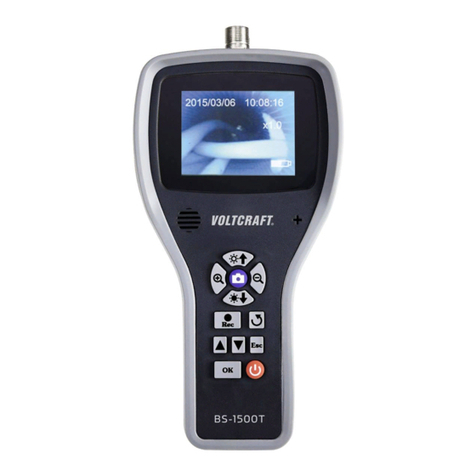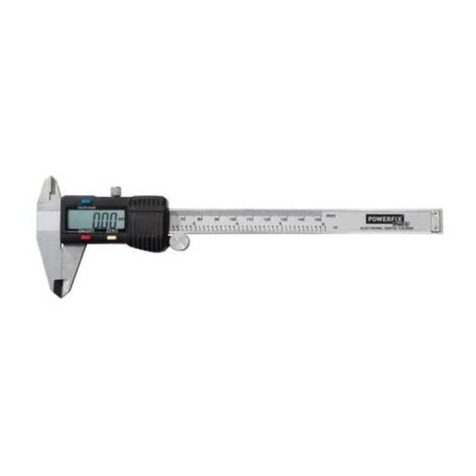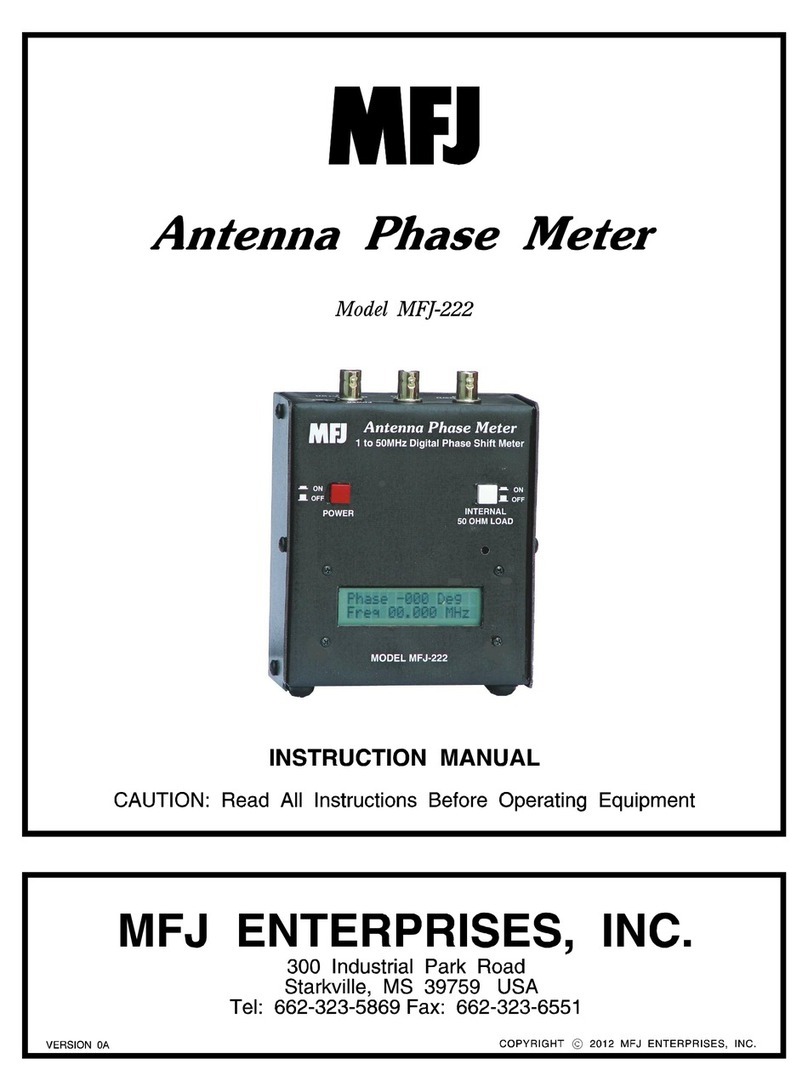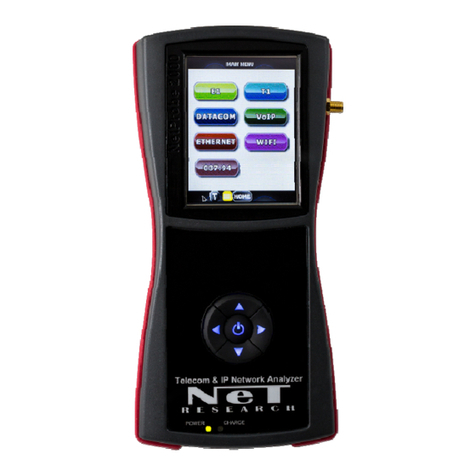Taking Measurements |Measuring Return Loss
4
and lower range readings. This is only used for settings of High Range, Passive Device. If you
omit this step, accuracy below -40 dB should be treated as +/- 1 dB typical.
13. Insert the device to test and take measurements.
3.1.1 Improving Accuracy
One shortcoming of the Signal Hound Spectrum Analyzer and Tracking Generator is poor VSWR / return
loss performance. However, this can be easily overcome by adding good 3 dB or 6 dB pads (fixed SMA
attenuators) to the output of the tracking generator and / or the input of the spectrum analyzer. A good
6 dB pad will improve return loss by nominally 12 dB to >20 dB, and should enable accurate
measurements relative to a 50 ohm system. These may be included when sweeping the "thru,"
effectively nulling them out. This will decrease your overall dynamic range.
3.1.2 Testing High Gain Amplifiers
When measuring an amplifier that will have gain of 20 to 40 dB, the use of a 20 dB pad is required.
Simply insert the 20 dB pad before you Store Thru, and leave the pad on either the SA or TG when
connecting to the amplifier. For amplifiers with Psat>+20 dBm, the pad should go on the output of the
amplifier. If an amplifier cannot safely handle -5 dBm, place the pad on the amplifier’s input.
3.1.3 Measuring Insertion loss > 80 dB
To measure more than 80-90 dB insertion loss, you will need to use Utilities > Tracking Generator
Control. Set your frequency to the desired test frequency, and set the amplitude to -10 dBm. Find the
CW signal using the USB-SA124B at about a 100 kHz span.
Decrease your span down to about 10 kHz, keeping the signal centered, then reduce your RBW to 10 Hz
or 100 Hz, depending on the dynamic range required. With a 10 Hz RBW, your noise floor will generally
show about 140 dB of insertion loss. This method is especially good for tuning notch filters where your
ultimate rejection at a specified frequency may need to be 100 dB or greater
3.2 MEASURING RETURN LOSS
A directional coupler of appropriate frequency range (sold separately) may be used to make
approximate return loss measurements. Connect your tracking generator to the "OUT" port, and
connect your spectrum analyzer to the "COUPLED" port. Use the "IN" port as your S-parameter test port.
Sweep this setup as the "thru" with the test port open (reflecting 100% of power). Then connect your
device to test (e.g. antenna) to the "IN" port. Return loss or |S11| will be displayed.
Once again, measurement accuracy will benefit from 3 to 6 dB pads on the Signal Hound devices. This
method is not as accurate as using a precision vector network analyzer with a full two port calibration,
but with a good directional coupler, measurements from 0 to -20 dB should be accurate.












